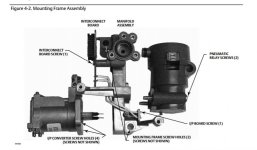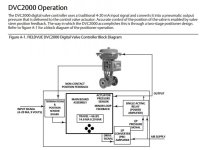Hi Gents,
Please could someone assist me in understanding this piece of equipment as to how it works. Any feedback would be greatly appreciated.
Correct if I'm incorrect. As your supply air to the relay is throttle which is 20-100kpa from an i/p converter , it switches a greater pressure through its output, to drive an actuator. Supply air could be 4-6bar.
Please could someone assist me in understanding this piece of equipment as to how it works. Any feedback would be greatly appreciated.
Correct if I'm incorrect. As your supply air to the relay is throttle which is 20-100kpa from an i/p converter , it switches a greater pressure through its output, to drive an actuator. Supply air could be 4-6bar.








